MARKETING
Post-Pandemic Travel Marketing: What Now?

The author’s views are entirely his or her own (excluding the unlikely event of hypnosis) and may not always reflect the views of Moz.
As borders reopen and travel resumes, the stakes to make up for the time and revenue lost in 2020 and 2021 have never been higher. For many travel and hospitality organizations, there’s no question about it – the 2022-23 season must be a success.
The good news is that hope is firmly on the horizon. US Travel’s latest data shows that, for the first time since the pandemic began, travel spending was above 2019 levels by 3%. While nearly 60% of US travelers note that rising gas prices will impact their upcoming travel decisions, more than a quarter plan to spend more money on vacations this summer than in 2019.
We still live in uncertain times, especially with increasing costs in almost every industry a big concern for consumers. But for travel and tourism brands, now is the time to push forward with recovery and work with customers who, after two long years, are looking to finally take a trip away from home.
Following many near-complete strategy and product pivots of 2020, there’s plenty that travel and tourism brands can be doing with their marketing to support their own long-term success.
Anticipating consumer needs and concerns
One of the biggest changes that many travel and tourism brands have seen over the past year is a longer consumer buying cycle. Where customers may have been ready to book a flight, hotel, or tour experience with very little research before 2020, that’s no longer the case.
Instead, customers are taking their time deciding whether or not travel is safe, affordable, and accessible for them and their families. This has ultimately led to lengthier waits for travel companies as customers move down the sales funnel.
But as a travel business, part of your role has always been to reassure customers that their experience will be what they’re looking for. The biggest difference now is in anticipating and responding to new fears that have arisen in the past two years around travel safety.
Educational tour company Context Travel has seen this attitude change firsthand, and found success through adjusting their marketing strategy accordingly.
“We’re getting in front of travelers much higher up the funnel to gain trust by creating and sharing compelling content for people who are just dipping their toes back into travel”, says Director of Marketing, Ali Murphy. “This is a big shift from pre-pandemic, when we focused our marketing efforts on capturing people who were ready to buy a tour.”
Acknowledging the fear
You’ve likely spent the majority of the past two years continually adjusting your marketing strategy — and now isn’t the time to stop. While there may be some trepidation from consumers around travel picking back up, tourism and hospitality brands must acknowledge and accept these fears rather than turning a blind eye to them. This is where you need to think like your customers and alter your search marketing approach.
What is the data telling you? Instead of looking for large group tours, are your customers more likely to be interested in smaller, private tours with just their family group? Or are outdoor-based activities becoming the most-viewed pages on your site?
These are also the pages on your site that you might want to consider prioritizing in an SEO refresh. Consider whether the consumer landscape matches existing messaging and keyword strategy. If not, now might be the right time to find some copy and content resources to give those pages a re-write more consistent with current strategy and offerings.
There’s a good chance that your customers will be prioritizing different aspects of their experience for the foreseeable future, so it’s up to you to meet those needs. Instead of backing away from marketing your products and services, promote private accommodation, outdoor adventures, and a more people-concious travel experience.
Embracing new opportunities in search
Going after a whole new set of experiences in your search strategy is one thing, but travel brands should also be keeping tabs on what new features in search itself can be leveraged for their benefit. Mobile-first marketing is on the rise and your travel brand needs to be front and center.
You may not immediately think of TikTok as part of your search marketing plan, but we’ve all seen YouTube videos and tweets appearing in search results over the years, and TikTok content is finally making its way into SERPs as well.
While social content should still be focused on your primary channel audiences (aka the people that are actually seeing the content on its intended platform), there are plenty of benefits to be gained if your content can rank in traditional search results. When you’re working on your social strategy and planning for new content creation, keep this in mind as you optimize your videos later on (or loop in your brand team to tackle this across silos!)
This is just as applicable for in-destination brands offering consumers dinner, a night out, or an activity, as it is the destination marketing organization (DMO) marketing the destination itself. Social-as-search allows brands and organizations to actually influence the discovery phase, not just the decision-making phase of the consumer buying journey.
According to a recent study from TikTok, 49% of its users use the platform for discovering something new, and are 1.5 times more likely to immediately go out and purchase what they have discovered compared to other platforms. The opportunity to rank for high intent keywords, especially driven around experiential and food/beverage activities, with consumer proof in places like TikTok is a virtually untapped opportunity for brands across the board.
For many tourism brands, these opportunities simply didn’t exist in a pre-pandemic world. Yet many of the biggest companies are still refraining from embracing them. To stay competitive and attract both US-based and overseas customers, now is the time to jump on these opportunities before everyone else.
Leveraging existing marketing channels for conversion
At this point, we should all know that marketing channels work best when we think of them as complementary, rather than silos. “Always-on” marketing means that customers have access to brands 24/7, every day of the year. Because of that, they’re interacting with brand content across multiple platforms — from ads, to social media, to search results, to emails.
Travel consumers have always been a multi-platform, multi-stage audience. But the lengthening of the sales process means that securing a conversion after several touch points has become even more difficult for this industry. If your travel or tourism brand wasn’t already working to leverage different channels at once, now is the time.
Search is certainly still a long game when it comes to digital marketing, but it’s also one of the most trusted avenues out there. When you’re working on new content that can benefit you in six to 12 months, go back to thinking about your customers’ fears and needs first. How can you answer those questions and concerns better than your competitors?
From there, echo that content across other platforms. While you wait for the SERPs to catch up, get in front of your audience with additional messaging, proof points, and content that amplifies why to buy, why to visit, and why to trust your brand (user generated content is a great avenue for this). Search is undoubtedly important, but it is not the only channel that your consumer base is going to interact with on their path to purchase. Think about each channel as a unique opportunity to engage your audience and where they might be in the buying and consideration cycle when they encounter it.
For example, if a consumer is searching for content related to “best things to do in Costa Rica”, and your brand is well-positioned to answer that question through search, it might also be worth trying to get that user to sign up for your newsletter with Costa Rica travel tips, follow you on social media for local restaurant recommendations, and retarget with ads to re-engage them later in the buying cycle. Treat search as an entry point — not the only point — of opportunity and build your other channels as amplifiers.
This concept of social-as-search is also a great way to familiarize your brand to consumers. Almost no space on TikTok is as saturated as travel, and yet one airline manages to stand out for terms like “rating airlines” and “european travel”: Air Baltic.
@airbaltic it do be like that 🥲 #airline #cabincrew #airBaltic #okayletsgo ♬ Okaaay lets go – Sarah Vilard
It’s not hard to see why. Their personality-driven content is relatable, humor-forward, and draws in viewers while educating consumers in the crowded low cost carrier space about their crew, destinations, and air frames.
Accepting changes within the travel industry as a whole
Instead of burying your head in the sand and thinking about the negative impacts, make travel industry changes part of your marketing campaigns. For instance, with non-refundable travel becoming a thing of the past, being more flexible with customers after they book isn’t going to land you more business. Letting them know their options ahead of time, though, can make you stand out.
Hotels.com is a great example of this. Their 2021 “revenge travel” campaign perfectly highlighted their understanding of customer concerns around making reservations: that may need to be changed or canceled last-minute. Instead of assuming that they could return to a point of non-refundable travel, their marketing fully acknowledged these customer pain points and made their position clear (with obvious dramatic humor), and favorable, for consumers looking to travel with flexibility.
Customers are ready for travel, and brands that embrace this “moment” and make it memorable are prepared to win. Brands that are prepared to go the extra distance will win favor with eager consumers, and brands that are simply meeting expectations will be seen as doing the bare minimum. The opportunity is in the “memorable”.
“Experiences sell way more than [traditional] products. Even more so in the hospitality industry. There are hundreds of hotels selling the same plans and accommodations as we are. So what makes us so special? Added value. Feeling. Belonging. Unique experiences. The most loyal clients buy that ‘special something’ that a product makes them feel rather than the product itself,” saya Ella Bencosme, Sales & Marketing Coordinator for the Holiday Inn Resort Aruba.
This is also a good time to make your reviews work for you as a marketing tactic. Many of your prospective customers will be looking for reviews that call out some of these widespread industry changes, like flexible change policies, hygiene standards, general safety, linens and laundering, contact with other guests, and the ability to “go private”.
Whether you like it or not, how you respond matters and your audience is watching. Customer reviews have always been a fundamental part of the travel and hospitality industry, and this has only become of increased importance in recent years. Stay on top of reading and responding to your reviews, particularly from those who may not have had a good experience. If you need just one more reason to put stock in the user experience, think of the visibility that Google reviews, and OTAs like Expedia and Trip Advisor, have in the SERP.
Brand guarantees are not enough to satisfy consumers. Instead, hearing and reading recent first-hand accounts of travel experiences from customers just like themselves will continue to be a significant deciding factor for many people.
In conclusion
Tourism and hospitality have changed — probably forever. Travel expectations that the pandemic introduced will not be easily walked back. In a post-pandemic world, travel brands must adjust their marketing strategies to align with new consumer needs, expectations, and fears. Embracing and leveraging new forms of search marketing, while continuing to build a reputable and consistent brand in the eyes of travel-cautious consumers is the only way to succeed.
MARKETING
YouTube Ad Specs, Sizes, and Examples [2024 Update]
![YouTube Ad Specs, Sizes, and Examples [2024 Update] YouTube Ad Specs, Sizes, and Examples](https://articles.entireweb.com/wp-content/uploads/2024/06/YouTube-Ad-Specs-Sizes-and-Examples.jpg)
Introduction
With billions of users each month, YouTube is the world’s second largest search engine and top website for video content. This makes it a great place for advertising. To succeed, advertisers need to follow the correct YouTube ad specifications. These rules help your ad reach more viewers, increasing the chance of gaining new customers and boosting brand awareness.
Types of YouTube Ads
Video Ads
- Description: These play before, during, or after a YouTube video on computers or mobile devices.
- Types:
- In-stream ads: Can be skippable or non-skippable.
- Bumper ads: Non-skippable, short ads that play before, during, or after a video.
Display Ads
- Description: These appear in different spots on YouTube and usually use text or static images.
- Note: YouTube does not support display image ads directly on its app, but these can be targeted to YouTube.com through Google Display Network (GDN).
Companion Banners
- Description: Appears to the right of the YouTube player on desktop.
- Requirement: Must be purchased alongside In-stream ads, Bumper ads, or In-feed ads.
In-feed Ads
- Description: Resemble videos with images, headlines, and text. They link to a public or unlisted YouTube video.
Outstream Ads
- Description: Mobile-only video ads that play outside of YouTube, on websites and apps within the Google video partner network.
Masthead Ads
- Description: Premium, high-visibility banner ads displayed at the top of the YouTube homepage for both desktop and mobile users.
YouTube Ad Specs by Type
Skippable In-stream Video Ads
- Placement: Before, during, or after a YouTube video.
- Resolution:
- Horizontal: 1920 x 1080px
- Vertical: 1080 x 1920px
- Square: 1080 x 1080px
- Aspect Ratio:
- Horizontal: 16:9
- Vertical: 9:16
- Square: 1:1
- Length:
- Awareness: 15-20 seconds
- Consideration: 2-3 minutes
- Action: 15-20 seconds
Non-skippable In-stream Video Ads
- Description: Must be watched completely before the main video.
- Length: 15 seconds (or 20 seconds in certain markets).
- Resolution:
- Horizontal: 1920 x 1080px
- Vertical: 1080 x 1920px
- Square: 1080 x 1080px
- Aspect Ratio:
- Horizontal: 16:9
- Vertical: 9:16
- Square: 1:1
Bumper Ads
- Length: Maximum 6 seconds.
- File Format: MP4, Quicktime, AVI, ASF, Windows Media, or MPEG.
- Resolution:
- Horizontal: 640 x 360px
- Vertical: 480 x 360px
In-feed Ads
- Description: Show alongside YouTube content, like search results or the Home feed.
- Resolution:
- Horizontal: 1920 x 1080px
- Vertical: 1080 x 1920px
- Square: 1080 x 1080px
- Aspect Ratio:
- Horizontal: 16:9
- Square: 1:1
- Length:
- Awareness: 15-20 seconds
- Consideration: 2-3 minutes
- Headline/Description:
- Headline: Up to 2 lines, 40 characters per line
- Description: Up to 2 lines, 35 characters per line
Display Ads
- Description: Static images or animated media that appear on YouTube next to video suggestions, in search results, or on the homepage.
- Image Size: 300×60 pixels.
- File Type: GIF, JPG, PNG.
- File Size: Max 150KB.
- Max Animation Length: 30 seconds.
Outstream Ads
- Description: Mobile-only video ads that appear on websites and apps within the Google video partner network, not on YouTube itself.
- Logo Specs:
- Square: 1:1 (200 x 200px).
- File Type: JPG, GIF, PNG.
- Max Size: 200KB.
Masthead Ads
- Description: High-visibility ads at the top of the YouTube homepage.
- Resolution: 1920 x 1080 or higher.
- File Type: JPG or PNG (without transparency).
Conclusion
YouTube offers a variety of ad formats to reach audiences effectively in 2024. Whether you want to build brand awareness, drive conversions, or target specific demographics, YouTube provides a dynamic platform for your advertising needs. Always follow Google’s advertising policies and the technical ad specs to ensure your ads perform their best. Ready to start using YouTube ads? Contact us today to get started!
MARKETING
Why We Are Always ‘Clicking to Buy’, According to Psychologists

Amazon pillows.
MARKETING
A deeper dive into data, personalization and Copilots
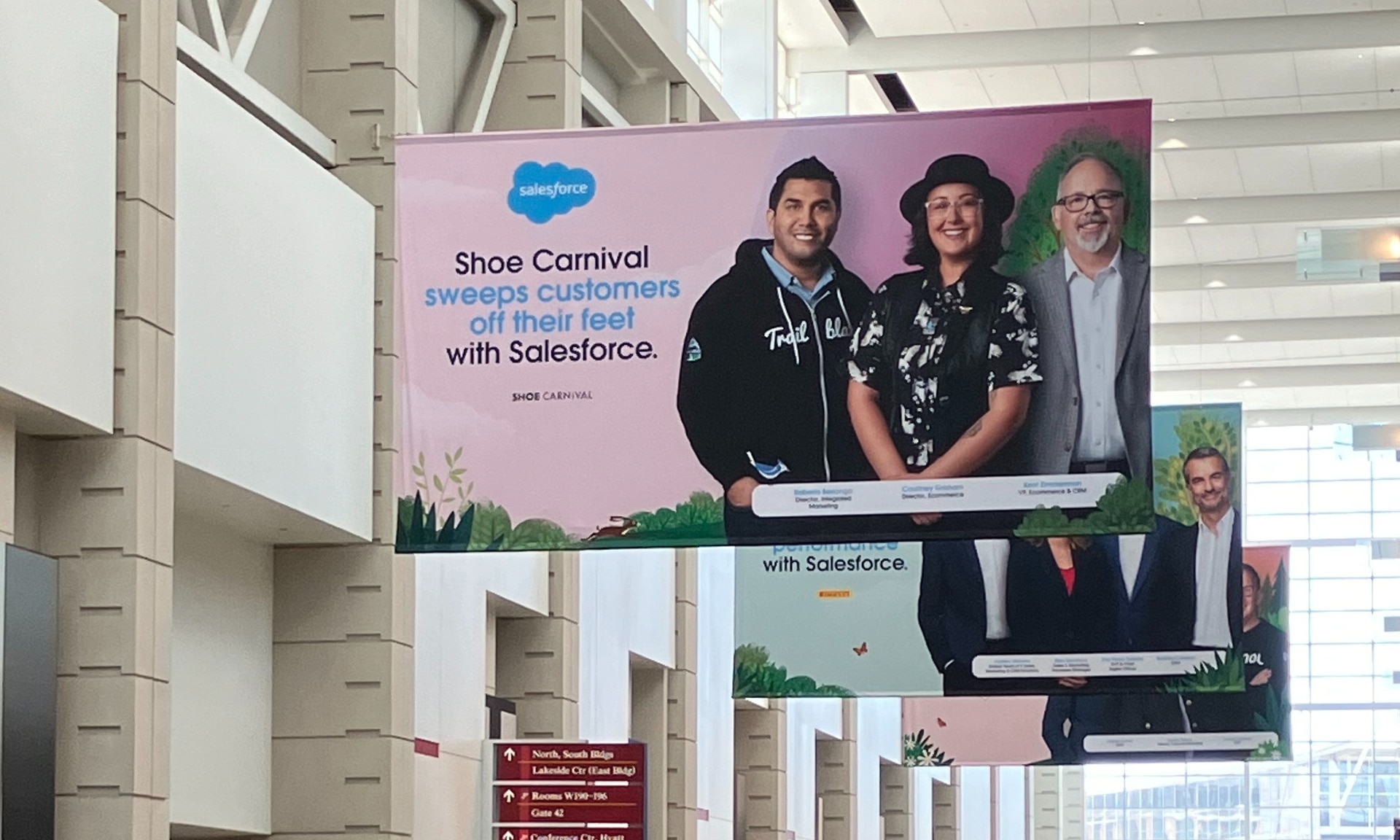
Salesforce launched a collection of new, generative AI-related products at Connections in Chicago this week. They included new Einstein Copilots for marketers and merchants and Einstein Personalization.
To better understand, not only the potential impact of the new products, but the evolving Salesforce architecture, we sat down with Bobby Jania, CMO, Marketing Cloud.
Dig deeper: Salesforce piles on the Einstein Copilots
Salesforce’s evolving architecture
It’s hard to deny that Salesforce likes coming up with new names for platforms and products (what happened to Customer 360?) and this can sometimes make the observer wonder if something is brand new, or old but with a brand new name. In particular, what exactly is Einstein 1 and how is it related to Salesforce Data Cloud?
“Data Cloud is built on the Einstein 1 platform,” Jania explained. “The Einstein 1 platform is our entire Salesforce platform and that includes products like Sales Cloud, Service Cloud — that it includes the original idea of Salesforce not just being in the cloud, but being multi-tenancy.”
Data Cloud — not an acquisition, of course — was built natively on that platform. It was the first product built on Hyperforce, Salesforce’s new cloud infrastructure architecture. “Since Data Cloud was on what we now call the Einstein 1 platform from Day One, it has always natively connected to, and been able to read anything in Sales Cloud, Service Cloud [and so on]. On top of that, we can now bring in, not only structured but unstructured data.”
That’s a significant progression from the position, several years ago, when Salesforce had stitched together a platform around various acquisitions (ExactTarget, for example) that didn’t necessarily talk to each other.
“At times, what we would do is have a kind of behind-the-scenes flow where data from one product could be moved into another product,” said Jania, “but in many of those cases the data would then be in both, whereas now the data is in Data Cloud. Tableau will run natively off Data Cloud; Commerce Cloud, Service Cloud, Marketing Cloud — they’re all going to the same operational customer profile.” They’re not copying the data from Data Cloud, Jania confirmed.
Another thing to know is tit’s possible for Salesforce customers to import their own datasets into Data Cloud. “We wanted to create a federated data model,” said Jania. “If you’re using Snowflake, for example, we more or less virtually sit on your data lake. The value we add is that we will look at all your data and help you form these operational customer profiles.”
Let’s learn more about Einstein Copilot
“Copilot means that I have an assistant with me in the tool where I need to be working that contextually knows what I am trying to do and helps me at every step of the process,” Jania said.
For marketers, this might begin with a campaign brief developed with Copilot’s assistance, the identification of an audience based on the brief, and then the development of email or other content. “What’s really cool is the idea of Einstein Studio where our customers will create actions [for Copilot] that we hadn’t even thought about.”
Here’s a key insight (back to nomenclature). We reported on Copilot for markets, Copilot for merchants, Copilot for shoppers. It turns out, however, that there is just one Copilot, Einstein Copilot, and these are use cases. “There’s just one Copilot, we just add these for a little clarity; we’re going to talk about marketing use cases, about shoppers’ use cases. These are actions for the marketing use cases we built out of the box; you can build your own.”
It’s surely going to take a little time for marketers to learn to work easily with Copilot. “There’s always time for adoption,” Jania agreed. “What is directly connected with this is, this is my ninth Connections and this one has the most hands-on training that I’ve seen since 2014 — and a lot of that is getting people using Data Cloud, using these tools rather than just being given a demo.”
What’s new about Einstein Personalization
Salesforce Einstein has been around since 2016 and many of the use cases seem to have involved personalization in various forms. What’s new?
“Einstein Personalization is a real-time decision engine and it’s going to choose next-best-action, next-best-offer. What is new is that it’s a service now that runs natively on top of Data Cloud.” A lot of real-time decision engines need their own set of data that might actually be a subset of data. “Einstein Personalization is going to look holistically at a customer and recommend a next-best-action that could be natively surfaced in Service Cloud, Sales Cloud or Marketing Cloud.”
Finally, trust
One feature of the presentations at Connections was the reassurance that, although public LLMs like ChatGPT could be selected for application to customer data, none of that data would be retained by the LLMs. Is this just a matter of written agreements? No, not just that, said Jania.
“In the Einstein Trust Layer, all of the data, when it connects to an LLM, runs through our gateway. If there was a prompt that had personally identifiable information — a credit card number, an email address — at a mimum, all that is stripped out. The LLMs do not store the output; we store the output for auditing back in Salesforce. Any output that comes back through our gateway is logged in our system; it runs through a toxicity model; and only at the end do we put PII data back into the answer. There are real pieces beyond a handshake that this data is safe.”
-

 SEO7 days ago
SEO7 days agoGoogle’s Revamped Documentation Shows 4 Reasons To Refresh Content
-
SEARCHENGINES5 days ago
Daily Search Forum Recap: August 26, 2024
-

 SEARCHENGINES7 days ago
SEARCHENGINES7 days agoGoogle Ranking Bug Fixed, August Core Update Swings, AI Overviews, Google Ads Bug & More
-
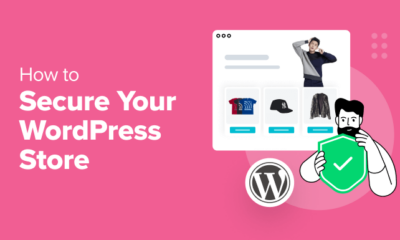
 WORDPRESS7 days ago
WORDPRESS7 days agoHow to Secure Your WordPress Store
-
SEARCHENGINES4 days ago
Daily Search Forum Recap: August 27, 2024
-

 AFFILIATE MARKETING7 days ago
AFFILIATE MARKETING7 days agoBusiness Owners are Batting 1,000 With This All-in-One Management Hub
-

 SEARCHENGINES6 days ago
SEARCHENGINES6 days agoGoogle Migrating All To Google Merchant Center Next By September
-

 WORDPRESS5 days ago
WORDPRESS5 days ago9 Best Elementor Alternatives 2024 (Faster Page Builders)

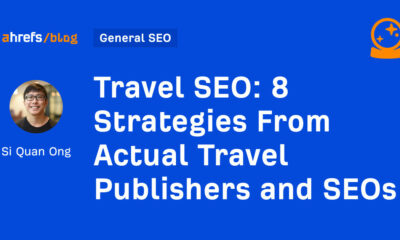



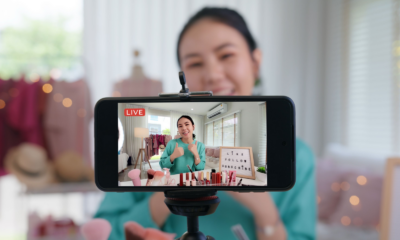





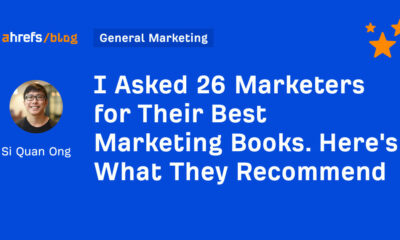



You must be logged in to post a comment Login